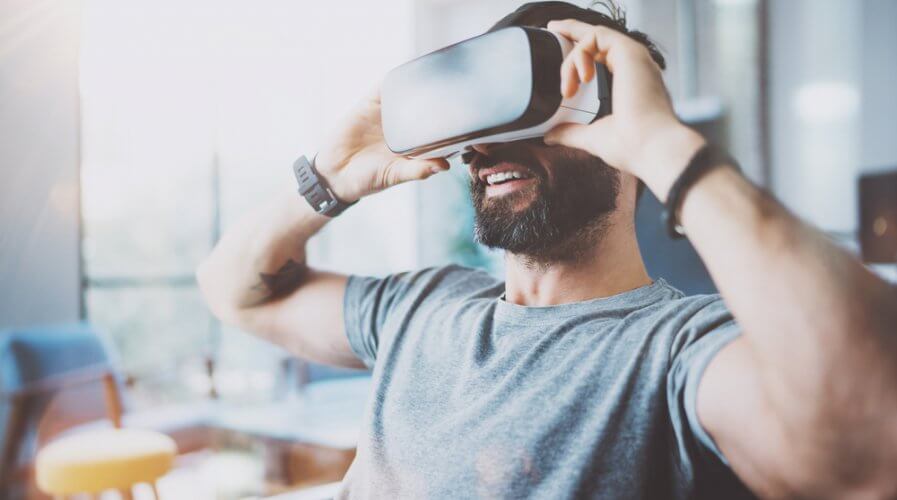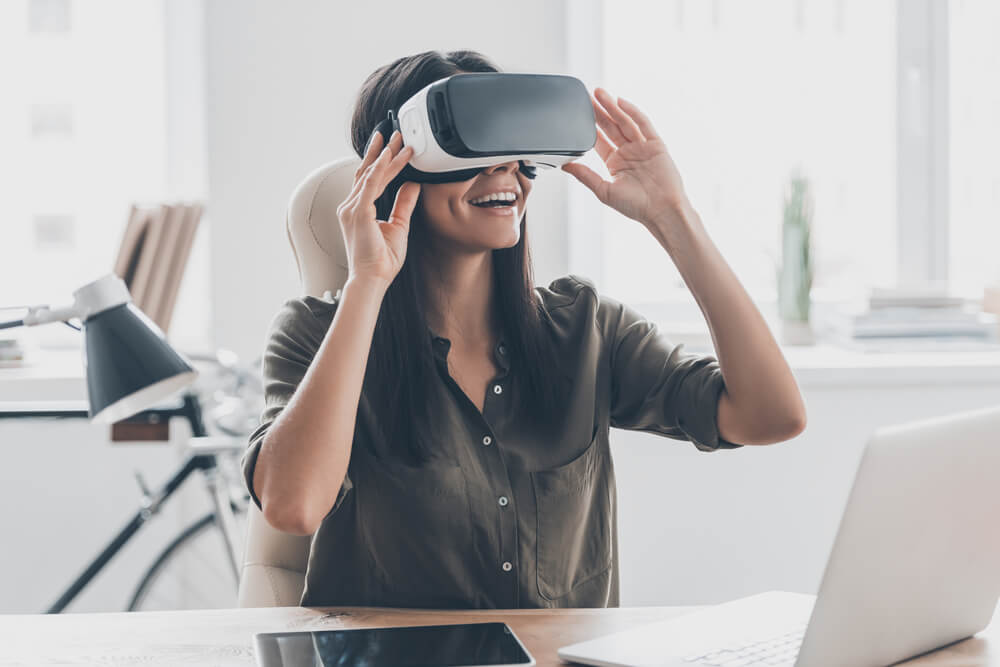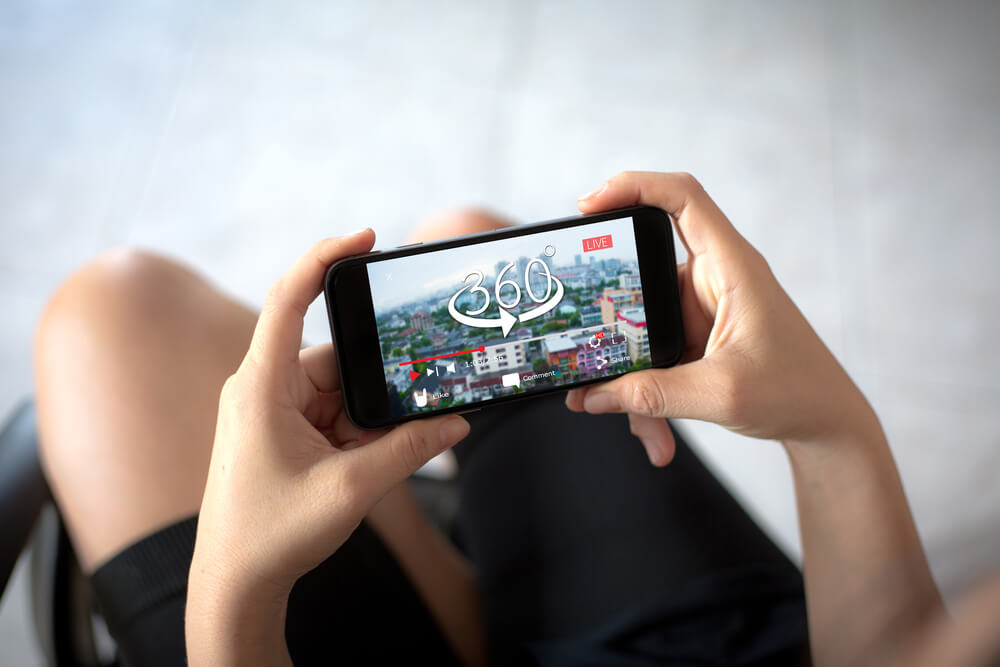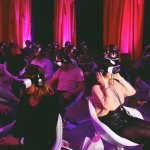
Immersive content paves the way for brands to transform people from mere viewers of ads, to active participants in brand experiences. Source: Shutterstock
Immersive content breathes new life into flagging advertising
THE WORLD is falling out of love with advertising. The use of ad-blocking software is skyrocketing and the amount of click through rates are plummeting quicker than you can say “skip ad”.
Consumers are being inundated with ad after ad, making it difficult to engage the consumer and stand out as a brand. But what if instead of consumers avoiding advertisements, they demanded more?
Immersive content such as VR, AR, and 360-degree video has the potential to make this reality.
“If done right AR and VR have a real potential to provide brands with immersive advertising opportunities that people can really enjoy and involve themselves in,” said Craig Gooding, CEO and founder of Vibrant Media,
Immersive content paves the way for brands to transform people from mere viewers of ads, to active participants in brand experiences.
Virtual reality in advertising

VR represents a ground-breaking tool for brands to interact with consumers. Source: Shutterstock
VR used to be the stuff of science fiction, but today it is increasingly becoming more popular in various industries. This medium allows users to take part in the ultimate experience and enables a deeper engagement than has ever been possible.
For brands, VR represents a ground-breaking tool for which to interact with consumers.
“The stats are showing that people are crying out for new ways to interact with brands instead of merely having the brand put in front of them,” said Helen Mussard, the vice president of global marketing at Vibrant Media, to The Drum.
“People have a higher attention span in VR because they truly engage and immerse themselves in it and then they walk away feeling they’ve had a really great experience – so it doesn’t feel like an ad.”
Renowned cinematographer and immersive media innovator, Andrew Shulkind, spoke with Tech Wire Asia about his work and opinion on immersive content in advertising.
“I think that the VR element of it is the ultimate landscape for an advertiser because the brand is literally marinating the consumer in the content, like mood and style” he said
Shulkind, who is also co-founder of HeadcaseVR, has worked with many big-named brands including Samsung, Chevrolet, Paramount, Sony Pictures and Apple, alongside his work in the movie industry.
“We worked on a big project for Target and Facebook with the idea of a shoppable 360. The idea was to draw e-commerce into their pipeline and this was part of that endeavor,” he said.
Despite the potential value that this campaign could have had, it lacked the interactivity component of VR. Instead of creating the ultimate immersive experience by enabling users to purchase items using, for instance, floating hotspots, users were just presented with a list of items and prices at the bottom.
Furthermore, due to Facebook’s algorithm, content such as this is often immediately replaced by the next thing in your news feed, meaning that interactivity and social saturation is often missed.
One company that is taking full advantage of VR and interactivity in advertising, however, is e-commerce giant Alibaba. Last year, Alibaba showcased its Buy+ virtual shopping experience at its Singles’ Day festival.
Consumers can simply slip their phone into a cardboard headset and browse a range of products, from handbags to shoes. Users can even have virtual models showcase the items on a catwalk show.
Users of Buy+ do not even have to go through the begrudging process of entering their payment details to make a purchase. Integrated with Alipay, a mobile and online payment platform, a payment can be made with a simple nod.
Despite some reservations about costs and the ROI of VR, media agencies are expressing increasing interest in VR investment. This investment is set to increase further as VR headsets become cheaper and more compact.
360 degree video

With 360 degree video, users just need a mobile device to take part in the experience. Source: Shutterstock
This video format is a fantastic platform for brands to have fun with, and it much more accessible for consumers compared to VR. The barriers that come with VR in advertising centres around reach and cost. With 360 degree video, on the other hand, users just need a mobile device to take part in the experience.
This video format has been shown to generate a 600 percent higher interaction rate from users, with a 700 percent higher content recall. 360-degree video so far seems to be positively welcomed by users. Vibrant Media’s poll on UK consumer attitudes towards the next generation of ads reported 31 percent of respondents have experienced the format, with 70 percent rating it as a good experience. Furthermore, 47 percent said that viewing an online 360-degree video ad would improve their understanding of a brand’s product.
When looking at what sub-group of audience shown the most interest in 360-degree ads, the younger generation prevailed, with 65 percent of 25 to 34 year olds showing an interest.
Augmented Reality in Advertising

According to a Demandware study, 72 percent of US beauty companies are pushing sales through mobile AR experiences. Source: Shutterstock
Perhaps a set back of VR in advertising is the requirement of users to invest in expensive headsets. AR enables users to take part in an immersive and interactive brand experience by using the cameras on their smart phones.
The biggest uptake for AR in advertising has been in the beauty sector, according to Vibrant Media’s Mussard.
“Beauty brands have traditionally struggled, especially when it comes to advertising as no one buys a beauty product online,” she explained.
“Their adverts are all about being aspirational. But now with AR, for the first time they can guide to sell…in other words help people try things out.”
According to a Demandware study, 72 percent of US beauty companies are pushing sales through mobile AR experiences. One example of a brand leveraging the power of AR is L’Oréal, who have developed a Makeup Genius app which enables users to virtually try on makeup as well as having the opportunity to learn tips on how best to apply it.
Retail giant Tesco has also introduced AR into their advertising strategies within its Home Book catalog. This includes a “cushion visualizer” which allows consumers to see how Tesco’s furnishing will look in their own home.
With eMarketer predicting that three in 10 internet users will be using ad-blockers by the end of 2018, it is crucial for brands to up their advertising game. But with brands increasingly experimenting with immersive content technologies in order to submerse the consumer in engaging experiences, there seems to be a light at the end of the tunnel.
READ MORE
- Ethical AI: The renewed importance of safeguarding data and customer privacy in Generative AI applications
- How Japan balances AI-driven opportunities with cybersecurity needs
- Deploying SASE: Benchmarking your approach
- Insurance everywhere all at once: the digital transformation of the APAC insurance industry
- Google parent Alphabet eyes HubSpot: A potential acquisition shaping the future of CRM








